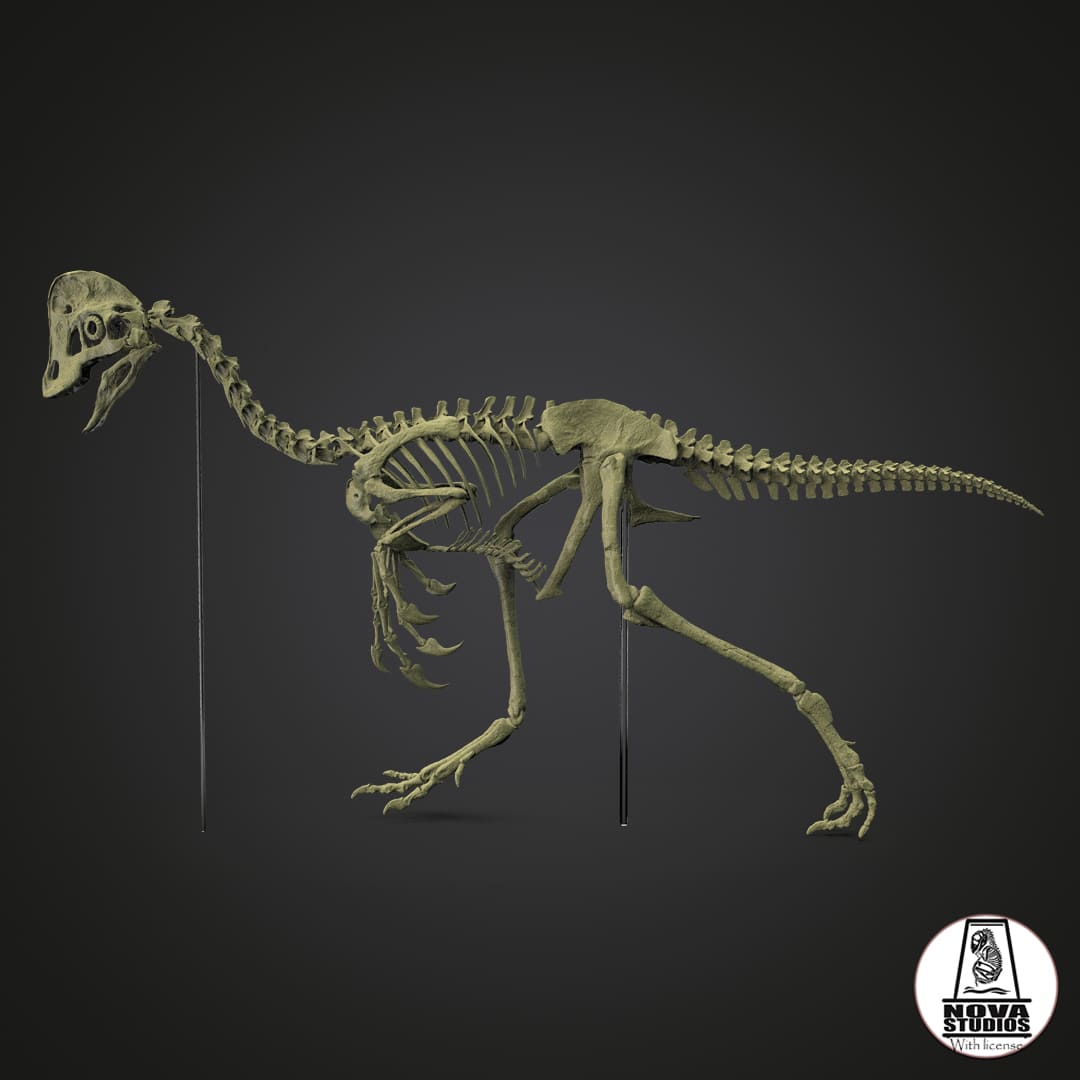
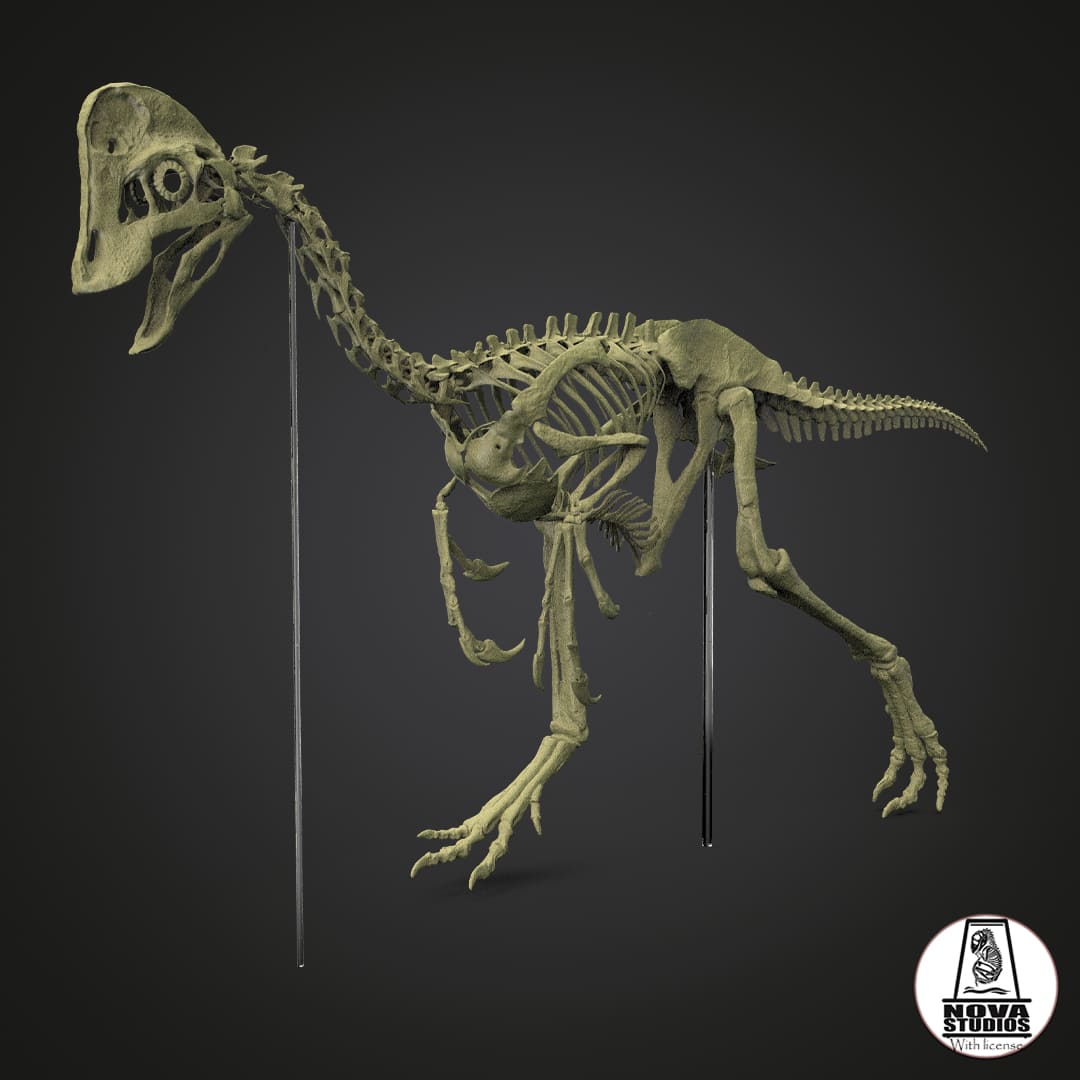
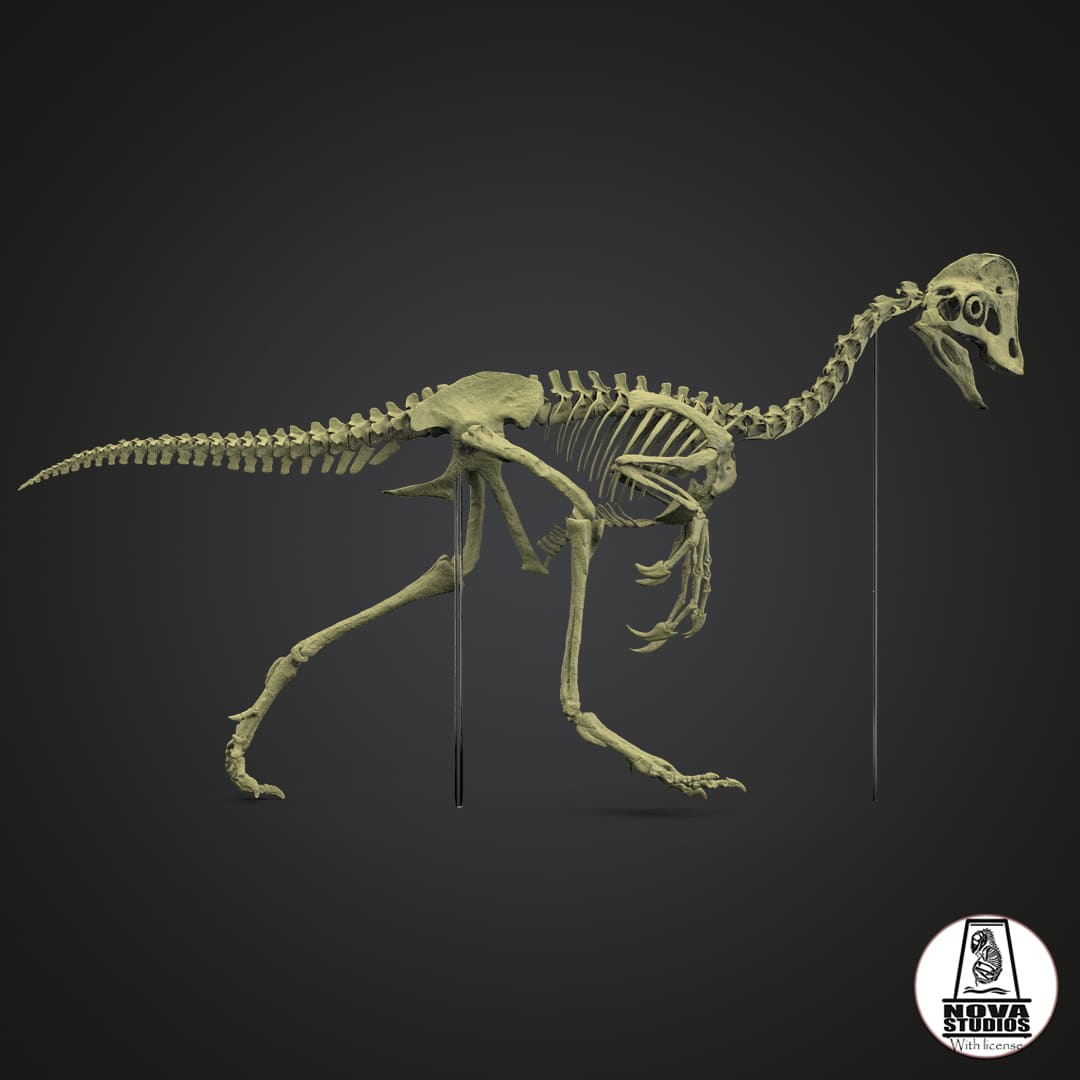
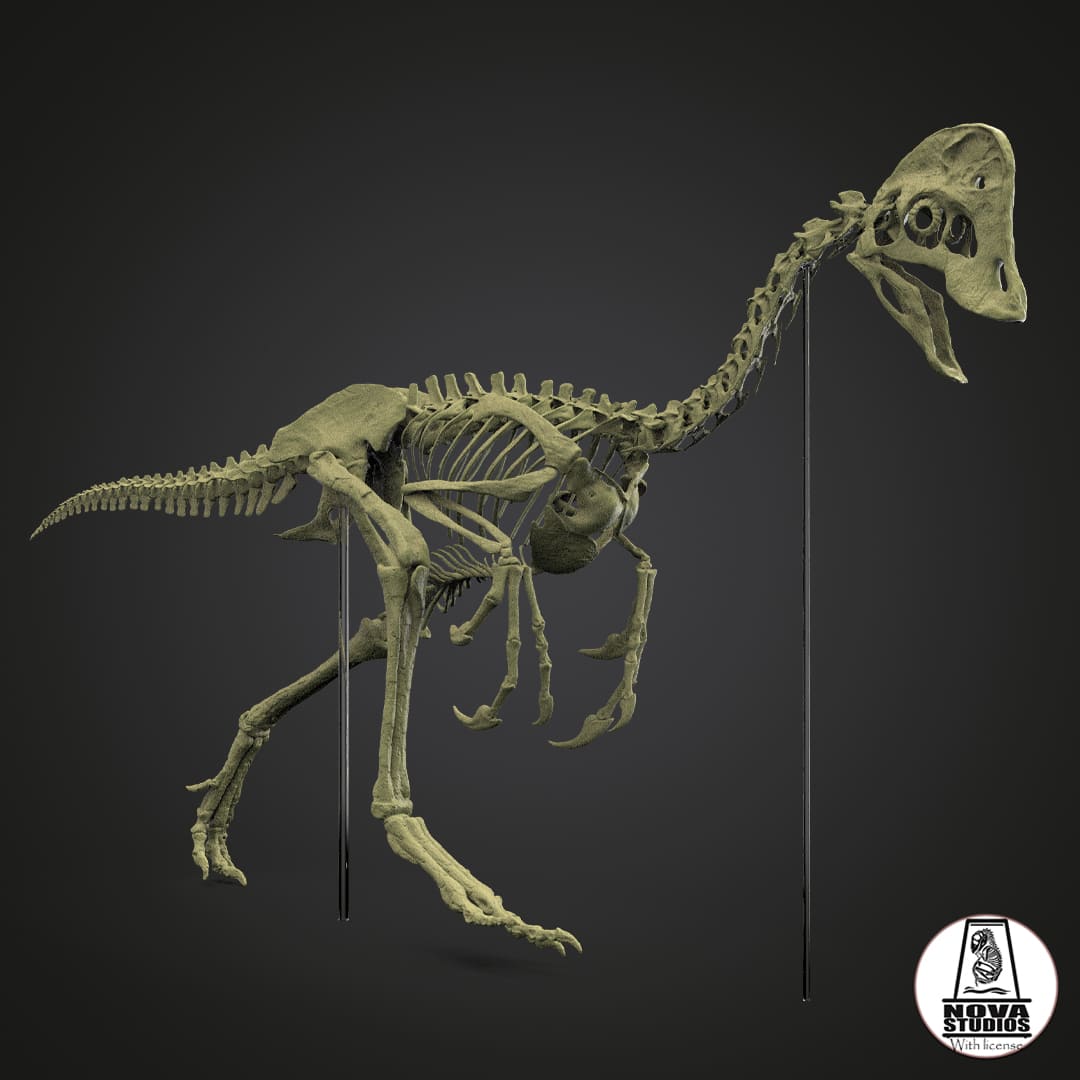
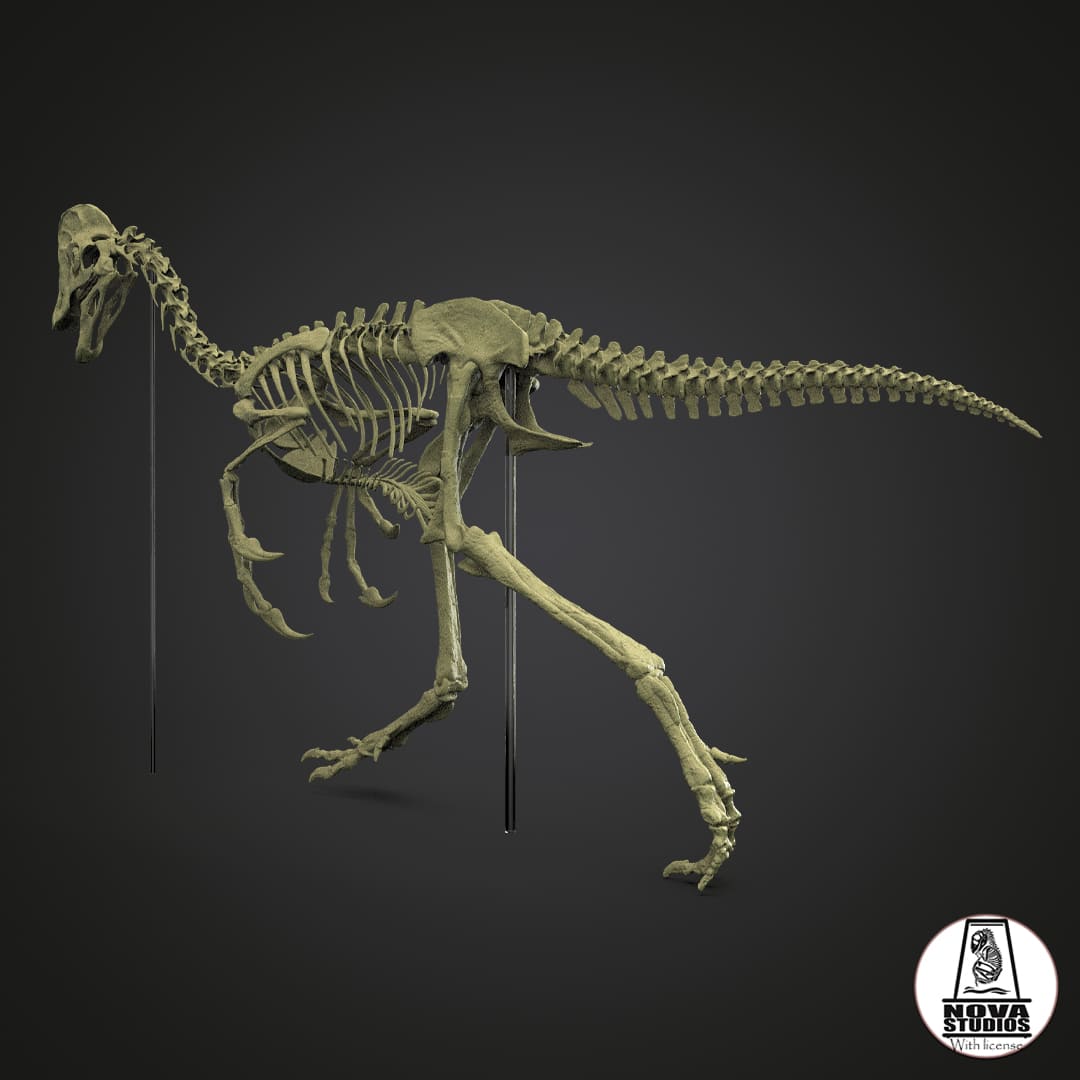

Anzu wyliei skeleton
Do you want another scale?
Contact us and we will make it possible!
How will you receive your replica?
In the unprimed and primed variants, you will receive the complete replicas except for the large models, where you will receive an assembly kit.
In the hand-painted variant, the replicas will be delivered complete.
How does the painting service work?
We created a private chat for you where you will have direct communication with our painter , being able to choose your preferred color schemes and follow the hand painting process closely.
Pairs well with

Anzu wyliei skeleton
If you have any questions, you are always welcome to contact us. We'll get back to you as soon as possible, within 24 hours on weekdays.
Shipping Information
Visit our shipping policy page to find all the information.
Customer Support
Give us a few details and we’ll offer the best solution. Connect by chat or email.
We are available 24/7.
FAQ’s
Visit our FAQ's page to find answers to common questions.
Contact Us
We'd love to hear from you. We are here to help. Visit our contact page to send us a message.
Product details
The skeleton of Anzu wyliei shows a set of features that make it stand out among theropod dinosaurs. Its skull is long and low, with a prominent bony crest on its head, which probably supported a keratinous structure similar to that of some current cassowaries. Its beak was sharp and toothless, suggesting an omnivorous diet and a great ability to tear or crush plant materials, small animals, eggs, and fruit. The jaws have sharp edges and a strong beak, useful for cutting and manipulating its food, supporting the theory of its varied diet.
The front limbs of Anzu wyliei were long and strong, with three fingers ending in sharp claws, which would have allowed it to manipulate objects or tear vegetation and potential prey. These robust hands and curved claws are similar to those of other oviraptorosaurs and suggest active foraging behavior, possibly digging up roots or searching for food among vegetation. Its hind limbs were slender but robust, showing adaptations for agile locomotion, although its structure does not suggest that it was especially fast. The long legs, combined with its intermediate size, indicate that it could move easily in different types of terrain, especially in wetland areas where its remains have been found.
The spine of Anzu wyliei also provides interesting data. Its neck was long and flexible, which would have allowed it to reach the ground or collect vegetation from low areas, similar to how a modern bird would do it. Its tail was moderately long and strong, and, although stiff, it seems to have served as a counterweight to the body when moving or using its hands to manipulate objects.
The most recent paleontological findings around Anzu wyliei have provided information about its environment and possible behavior. The remains of several individuals at different stages of development and similar conditions suggest that this species may have had some social interaction or that, at least, it shared territories with other individuals. The shape of its skeleton and the analysis of its fossil environment suggest that it inhabited areas with aquatic resources, such as river areas or swamps, where its ability to exploit a varied diet probably gave it an adaptive advantage.
Studies of Anzu wyliei have expanded knowledge about North American oviraptorosaurs and their ecological diversity, reinforcing their evolutionary link to modern birds. Its skeleton, with a mix of adaptations for a flexible diet and a structure reminiscent of that of modern birds, remains a benchmark for understanding the relationship between theropods and birds, and suggests how changes in late Cretaceous ecosystems may have influenced the diversity of these dinosaurs in North America.
Incredible and novel museum-quality replica with a high degree of scientific rigor.
Approximate measurements of the Anzu:
- 1:5 scale Easy-to-assemble kit
- Length 647 mm
- Height 363 mm
- Width 129 mm
- Snout-tail length 700 mm
- Solid pieces
- Includes supports
- Base not included
- 1:3 scale Easy-to-assemble kit with metal joints
- Length 1078 mm
- Height 604 mm
- Width 215 mm
- Snout-tail length 1167 mm
- Solid pieces
- Includes supports
- Base not included
- 1:1 scale Easy-to-assemble kit with metal joints
- Length 3235 mm
- Height 1813 mm
- Width 645 mm
- Snout-tail length 3500 mm
- Solid pieces
- FREE SHIPPING AND PACKAGING IN PALLETIZED WOODEN BOX
See photo
Information about aftershocks
Collector's item ; Hyper-realistic replica, highly detailed and with a high degree of scientific precision.
Made to scale, prototyped in resin and with a scenic base in most of the models offered. If you like miniatures, both for collecting and for painting, we offer you a wide variety of scale replicas; All of them related to dinosaurs, extinct prehistoric fauna and current fauna.
So if you love dinosaurs and animals as much as we do, this is your favorite store to collect and paint them :)
We are authorized distributors of all the replicas and figures we offer. We use 3D printers with 8K - 14K resolution, and high-quality resins with additives to improve hardness and flexibility, thus offering replicas of impeccable quality.
Different scales will be used to make the replicas (depending on the size of the species), although we are open to making other suggested scales upon request as long as they fit in our printing trays, for which you will have to contact us via email and request the required size.
Replicas are supplied with the option of airbrush priming in dark grey. If you require another colour, please let us know which one you prefer in the box with special instructions for the seller. Without priming, we do not guarantee that the resin will accept paint.
We also offer the option of choosing a professionally painted replica, which is agreed upon throughout its development with the painter, through a private chat available.
Complete replica (one piece): We supply complete replicas in those models that are small, and models that are medium, large or not very bulky, will have the prerogative of being presented as a complete replica or assembly kit as the case may be.
Complete replicas will be supplied separately from their base.
Replica assembly kit: We supply replicas whose models are large, very large or bulky, only with this option.
The indicated replicas (generally composed of base, head, body and tail) will come prepared for the subsequent assembly that will be required by the client, by sanding, putty, adhesive or technique chosen by the client.
All replicas are thoroughly inspected before shipping and will be carefully packaged to prevent damage during transport.
Information about the models
The poses of the models aim to represent each character in the most scientifically viable way, thus revealing the life and customs of prehistoric and modern fauna.
Each character has its own personality and develops in different life scenarios; birth, adolescence and play, hunting, feeding, fighting, courtship, death and many other scenes from their daily life, always from the creative perspective of their designers.
Handmade
All orders are individually prepared on the cutter for subsequent prototyping, obtaining a resin part that will require post-processing by manual and ultrasonic cleaning, support removal, ultraviolet curing, labeling and packaging.
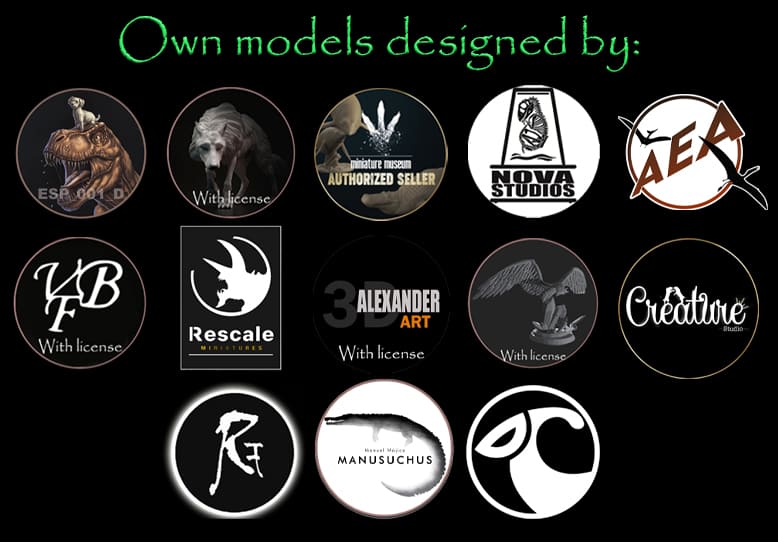
We are authorized distributors
We offer both our own physical replicas and those that have been modeled by many of the best 3D designers, in order to offer you the greatest possible variety.
Frequently Asked Questions
If you have any questions about products, orders or shipping, please read our FAQ page to learn more.

